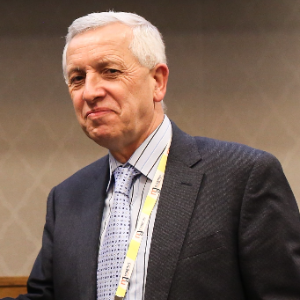Both the catalyst and the reactants are brought together in the same phase in homogeneous catalysis. Homogeneous catalysis refers to reactions that occur in the gas phase or, more commonly, the liquid phase; however, some reactions occur in the solid phase as well. Over the last two decades, homogeneous catalysis has grown in depth and reached to the point where tracing the borders of its current interest in organic synthesis, polymer and medicinal chemistry, for example, is challenging.
Catalysis is the acceleration of a chemical reaction by a chemical species that does not participate in the reaction's stoichiometry. Molecular catalysis is not a well-defined field, but it always refers to the application of molecular chemistry to chemical action, particularly molecular recognition and guest binding.
- Acid-base and Organometallic catalysis
- Catalyst Materials
- Hydrogenation

Stanislaw Dzwigaj
Sorbonne University, France
Anne M Gaffney
University of South Carolina, United States
Victor Cerda
University of the Balearic Island, Spain
Marta I Litter
Sapienza University of Rome, Italy
Dae Dong Sung
Korea University Sejong Campus, Korea, Republic of
Enrico Paris
CREA-IT & DIAEE, Italy
Collin G Joseph
University Malaysia Sabah, Malaysia



Title : A desirable framework for establishing a resource circulation society
Dai Yeun Jeong, Jeju National University, Korea, Republic of
Title : Design of efficient and stable structured catalysts for biofuels transformation into syngas by using advanced technologies of nanocomposite active components synthesis, supporting on heat conducting substrates and sintering
Vladislav Sadykov, Novosibirsk State University, Russian Federation
Title : Application of vanadium, tantalum and chromium single-site zeolites in heterogeneous catalysis
Stanislaw Dzwigaj, Sorbonne University, France
Title : Personalized and precision medicine (ppm) as a unique healthcare model through bi-odesign-inspired bio- and chemical engineering applications to secure the human healthcare and biosafety: Engineering of biocatalysts - from evolution to creation
Sergey Suchkov, N.D. Zelinskii Institute for Organic Chemistry of the Russian Academy of Sciences, Russian Federation
Title : Catalytic potential of biochar derived from heavy-metal-contaminated biomass
Enrico Paris, CREA-IT & DIAEE, Italy
Title : Effective B2O3 modified Ni/Al2O3 co precipitated catalysts for waste cooking oil transformation into green diesel
Eleana Kordouli, University of Patras, Greece